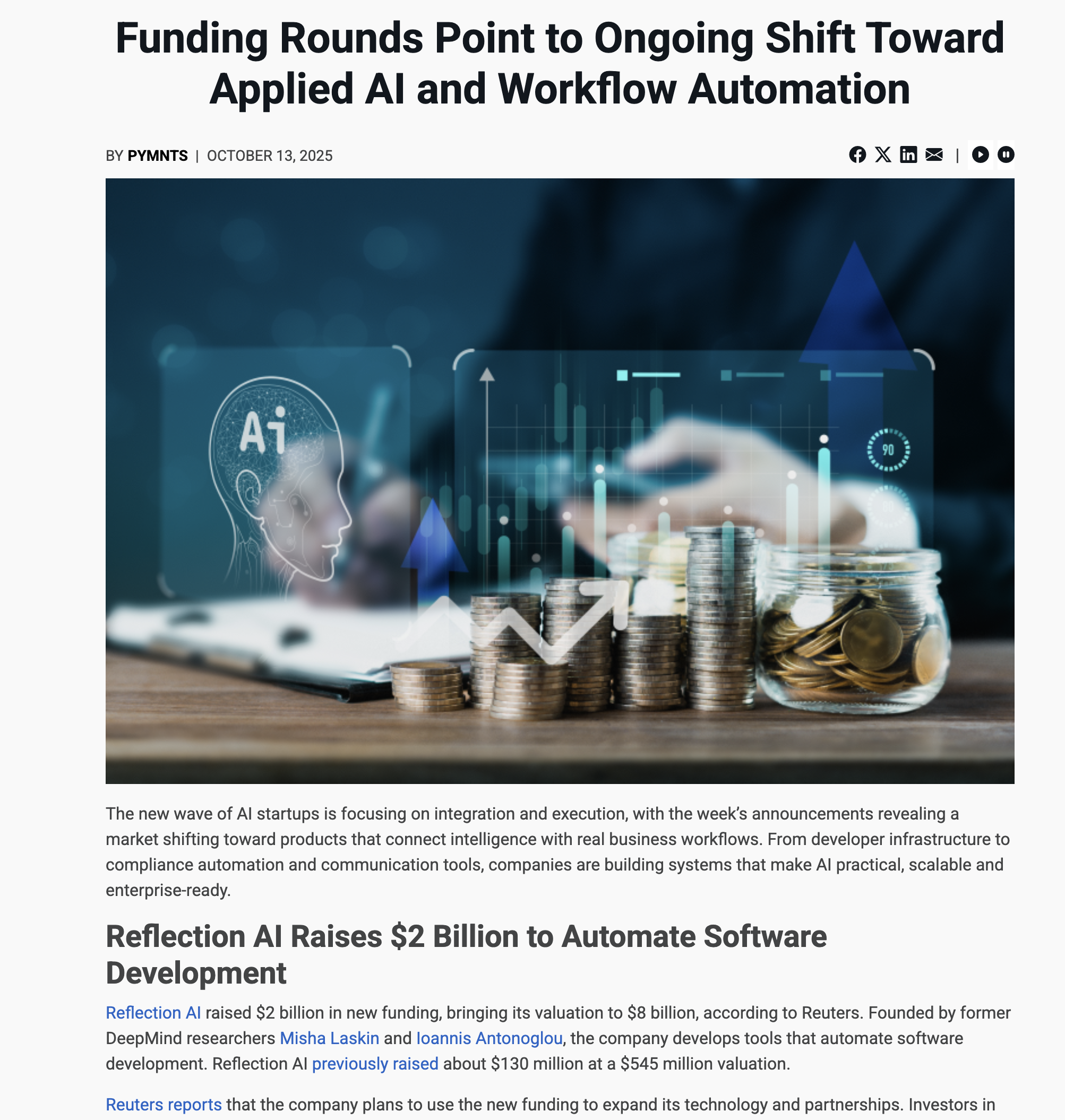Building Your Competitive AI Advantage with Intelligence Infrastructure
If you want your company to succeed in the new age of AI it will be critical to start developing your intelligence infrastructures.
Before I dive into what exactly intelligence infrastructure is, I first need to cover why they’re needed in the first place.
So as many readers may know, one of the key markers of the AI age is that the landscape is ever-changing.
And this factor is one of the greatest benefits, as well as one of the greatest challenges of field. New models are always coming out, new tools are always being released, social awareness is always rising and new use-cases are always being discovered.
Meaning the tools that you understand and use today, may very well be obsolete within the next cycle or two.
This brings a real challenge, as when the ground beneath you is always shifting, but then at the same time you know that if you never make the leap you’ll be phased out by the market it leads to the question of:
“What do we even build?”
This question is the source of infinite stagnation, but at the same time getting this question wrong can be the difference between:
Owning a compounding 10x moat
vs.
Having an arbitrary AI tool that sees zero adoption, brings zero change to the P&L, and is absorbed as a new “ai feature” within another platform.
Intelligence Infrastructure Stack
In this day and age what companies need isn’t more tools, everyone is already drowning in AI tools.
What’s needed is infrastructure and systems that are:
Able to provide real measurable value.
Become more valuable with time, not made irrelevant by it.
Built to evolve with modular improvements.
Intelligence infrastructure is the solution that brings stability and growth in an ever-changing world.
So what exactly are the components that make up intelligence infrastructure?
Well, the intelligence infra stack is made up of 5 separate interconnected layers:
Layer 1: Data
The data layer consists of all the data that is stored within the company.
It also consists of all data that can reliably be gathered from external sources through an API.
All of this data can be viewed as dormant potential in the form of context, which when combined with an LLM leads to dormant data becoming active in the form of synthesis, analysis, and operational actions.
Layer 2: Memory
An issue with baseline models today is that they struggle with long-horizon tasks as they tend to lose track of what they’re doing with the passing of time.
So how do we overcome those problems?
We create a layer of data that stays persistent throughout time and we ensure that it’s always inserted into the context window of the LLM with each call that it makes.
This makes it so that the functions of memory and the LLM stay separate. And that whenever a task needs to be performed the memory is always inserted as corresponding context during run-time.
We build this memory layer through the use of databases (Supabase, Pinecone, etc…), which allow us to store and label data in a way that the LLM can understand.
We can also control under which conditions to retrieve the data, and how to best use the data to complete the task with proper data labeling.
Layer 3: Orchestration
Now while data and memory unlock a lot of capability, they’re still just active potential. Orchestration is how we direct all of the potential towards a certain objective, to have the system achieve a specific outcome.
The orchestration layer is where we manage reasoning flows between models, agents, tools, and platforms to convert intent → computation → outcome.
There are many platforms that provide an interface for developers to do orchestration (n8n, Langchain, Langgraph, Agent Kit, etc…) and new ones are emerging every day.
Layer 4: Interface
The interface layer where the actions and the outputs of the system are made visible. This is where machine cognition is translated into human understanding.
The reason why this layer is important is because these systems are very new, so for most operators it requires a bit of a learning curve, as the way you interact with an intelligence system is different from other tools (eg. CRM).
This is why it’s critical to include the observational mechanisms, so that users can see behind the curtains and understand how the system got to certain outputs instead of just blindly trusting the “black-box”
The interface layer includes dashboards and operational tools (eg. Notion, Clickup, Monday, Google Sheets, etc…).
Layer 5: Actuation
The actuation layer is where insights turn to action.
When it comes to the AI field, this layer draws the most attention and excitement, as who doesn’t want a robot that can work while they sleep?
But, as you can see before we’ve even reached the layer of actuation there are 4 equally important layers that must be covered.
This is the reason for why we see the headlines of 95% fail-rate for pilots, as everyone is trying to skip to stage 5 before they’ve even glanced at stage 1.
The actuation layer is broken up into two key parts:
Contrary to popular belief you don't actually want an agent responsible for every action in your business (something many find out too late).
Some actions are too valuable or have too high of an error-cost to allow for an agent to bear the responsibility of any imperfection.
(eg. You wouldn’t allow an agent to perform the incisions in a surgery, however it’s completely viable for an agent to assist in performing a full medical check and analysis of a patient before the operation, and the lead surgeon performing the operation.)
Understanding the balance between what should be automated vs what should remain operator-led is one of the keymarks that separates a good vs. a bad Applied AI company.
Impacts of Intelligence Infrastructure
When intelligence infrastructure has been properly deployed in your company the results can be transformative:
An 8-figure media agency was able to turn their new show review process that required 7.5+ hours of effort and depended entirely on the intuitive, gut-driven knowledge of their Channel Managers into a 38-minute afterthought.
An ecom consultancy was able to codify the creative expertise of their marketing experts and company IP into a system that allowed them to turn the ads creation process, which took 10 hours+ of intensive creative effort into a 1 hour task.
These are results that wouldn’t have been possible by trying to “optimize the process”, hire more staff, or through a general AI tool.
These companies now have an advantage that allows them to move at a much greater pace than any of their competitors allowing them to see more results and generate more revenue, without scaling headcount.
How To Build Intelligence Infrastructure
For most companies Intelligence Infrastructure is not needed, as they could probably get greater returns from finding product-market fit or dialing their sales process.
However if you’re feeling the limits of your operations,
if you’re swimming in a sea of data with no clear map on how to navigate it,
if you can feel that the same actions that got you to your current level aren’t what will get you to the next,
then schedule a discovery call and we’ll begin the process of mapping out where the most opportunity lies in your company for intelligence infrastructure deployment.














